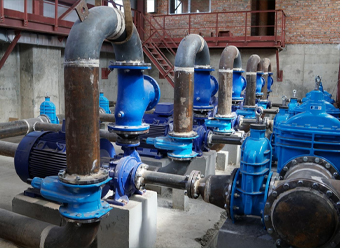Khmer
- Afrikaans
- Albanian
- Amharic
- Arabic
- Armenian
- Azerbaijani
- Basque
- Belarusian
- Bengali
- Bosnian
- Bulgarian
- Catalan
- Cebuano
- Corsican
- Croatian
- Czech
- Danish
- Dutch
- English
- Esperanto
- Estonian
- Finnish
- French
- Frisian
- Galician
- Georgian
- German
- Greek
- Gujarati
- Haitian Creole
- hausa
- hawaiian
- Hebrew
- Hindi
- Miao
- Hungarian
- Icelandic
- igbo
- Indonesian
- irish
- Italian
- Japanese
- Javanese
- Kannada
- kazakh
- Khmer
- Rwandese
- Korean
- Kurdish
- Kyrgyz
- Lao
- Latin
- Latvian
- Lithuanian
- Luxembourgish
- Macedonian
- Malgashi
- Malay
- Malayalam
- Maltese
- Maori
- Marathi
- Mongolian
- Myanmar
- Nepali
- Norwegian
- Norwegian
- Occitan
- Pashto
- Persian
- Polish
- Portuguese
- Punjabi
- Romanian
- Russian
- Samoan
- Scottish Gaelic
- Serbian
- Sesotho
- Shona
- Sindhi
- Sinhala
- Slovak
- Slovenian
- Somali
- Spanish
- Sundanese
- Swahili
- Swedish
- Tagalog
- Tajik
- Tamil
- Tatar
- Telugu
- Thai
- Turkish
- Turkmen
- Ukrainian
- Urdu
- Uighur
- Uzbek
- Vietnamese
- Welsh
- Bantu
- Yiddish
- Yoruba
- Zulu
Telephone: +86 13120555503
Email: frank@cypump.com
ធ្នូ . 11, 2024 10:06 Back to list
efficient solutions for transporting heavy concrete slurry ...
Efficient Solutions for Transporting Heavy Concrete Slurry
Transporting heavy concrete slurry poses significant challenges in the construction industry, particularly due to its viscosity, density, and weight. The efficiency of moving this material from one location to another is crucial for maintaining project timelines and ensuring the quality of the final structures. Over the years, various methodologies and technologies have emerged to improve the transportation of heavy concrete slurry, enabling contractors to optimize their operations and reduce costs.
Understanding Concrete Slurry Properties
Concrete slurry, primarily a mix of cement, water, and aggregates, is employed in various applications such as infrastructure development, foundation work, and repair projects. The heavy nature of concrete slurry can lead to issues during transportation, such as clogging in pipes, increased wear and tear on pumping equipment, and difficulties in reaching remote construction sites. Understanding the rheological properties of the slurry—such as its flow behavior and how it reacts under pressure—is essential for developing effective transportation solutions.
Pump Selection and System Design
One of the critical factors in transporting heavy concrete slurry efficiently is the selection of the right pumping system. Different types of pumps are available, including positive displacement pumps, centrifugal pumps, and screw pumps. Each has its advantages and limitations depending on the specific project requirements. Positive displacement pumps, for instance, are ideal for transporting viscous materials due to their capability to generate high pressure continuously, which prevents clogging and ensures a steady flow.
In addition to pump selection, the design of the pumping system itself is paramount. Properly designed piping systems that minimize bends and obstructions help maintain smooth flow rates, reducing the likelihood of blockages. Incorporating larger diameter pipes can also facilitate the movement of heavy slurry, as it can flow more freely without the constraints imposed by smaller pipes.
Use of Additives and Mixtures
efficient solutions for transporting heavy concrete slurry ...

Another innovative approach to enhance the transportation of heavy concrete slurry is the use of special additives. These admixtures can modify the slurry’s properties, making it less viscous and easier to pump over long distances. For instance, superplasticizers can improve flowability without increasing water content, allowing for easier transport while maintaining the desired strength and durability of the concrete. Additionally, retarders can be added to extend the workability time of the slurry, providing construction teams with ample time to transport and place the material.
Advanced Technology and Automation
The integration of advanced technology and automation in the transport of heavy concrete slurry can lead to substantial efficiencies. Automated pumping systems that utilize real-time data monitoring can adjust flows dynamically, optimizing the pumping operations based on the specific conditions on-site. This smart approach not only enhances the efficiency of slurry transportation but also minimizes waste and reduces energy consumption.
Furthermore, telematics and GPS tracking can be employed to monitor the movement of heavy concrete slurry from the mixing facility to the application site. This data can help in scheduling and logistics, ensuring that the slurry arrives on time and in optimal condition. By leveraging technology, construction teams can achieve higher levels of coordination and efficiency throughout the transportation process.
Addressing Environmental Concerns
As awareness of environmental issues grows, it is imperative for companies to consider the ecological impact of their slurry transportation methods. Utilizing more sustainable practices, such as recycling washout water and reusing slurry waste, can significantly reduce the environmental footprint associated with concrete transport. Moreover, implementing energy-efficient equipment and practices contributes to a more sustainable construction process overall.
Conclusion
In conclusion, transporting heavy concrete slurry efficiently requires a multifaceted approach that includes the right pumping solutions, innovative mixtures and additives, advanced technologies, and a commitment to sustainability. By understanding the properties of concrete slurry and employing tailored strategies, construction professionals can overcome the challenges associated with its transportation. The continuous evolution of technology and practices in this area holds great promise for enhancing productivity and maintaining the quality of construction projects, ultimately leading to successful outcomes in the industry.
-
ISG Series Vertical Pipeline Pump - Chi Yuan Pumps Co., LTD.|High Efficiency, Energy Saving, Low Noise
NewsJul.30,2025
-
ISG Series Vertical Pipeline Pump- Chi Yuan Pumps|High Efficiency&Low Noise
NewsJul.30,2025
-
ISG Series Vertical Pipeline Pump-Chi Yuan Pumps Co., LTD.|High Efficiency&Energy Conservation
NewsJul.30,2025
-
ISG Series Vertical Pipeline Pump - Chi Yuan Pumps Co., LTD.|Advanced Hydraulic Design&Energy-Efficient Solutions
NewsJul.30,2025
-
ISG Series Vertical Pipeline Pump - Chi Yuan Pumps Co., LTD.
NewsJul.30,2025
-
ISG Series Vertical Pipeline Pump - Chi Yuan Pumps Co., LTD.|energy-efficient fluid handling&industrial durability
NewsJul.30,2025










